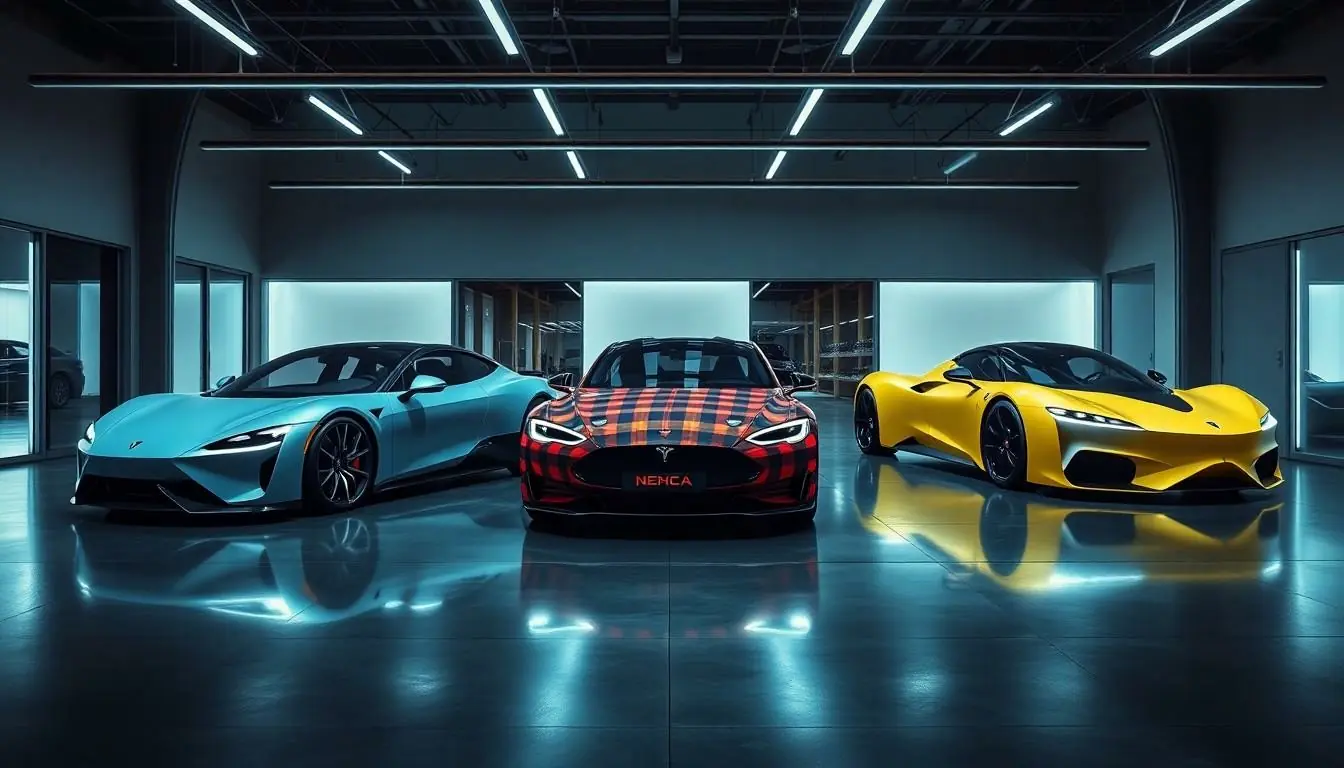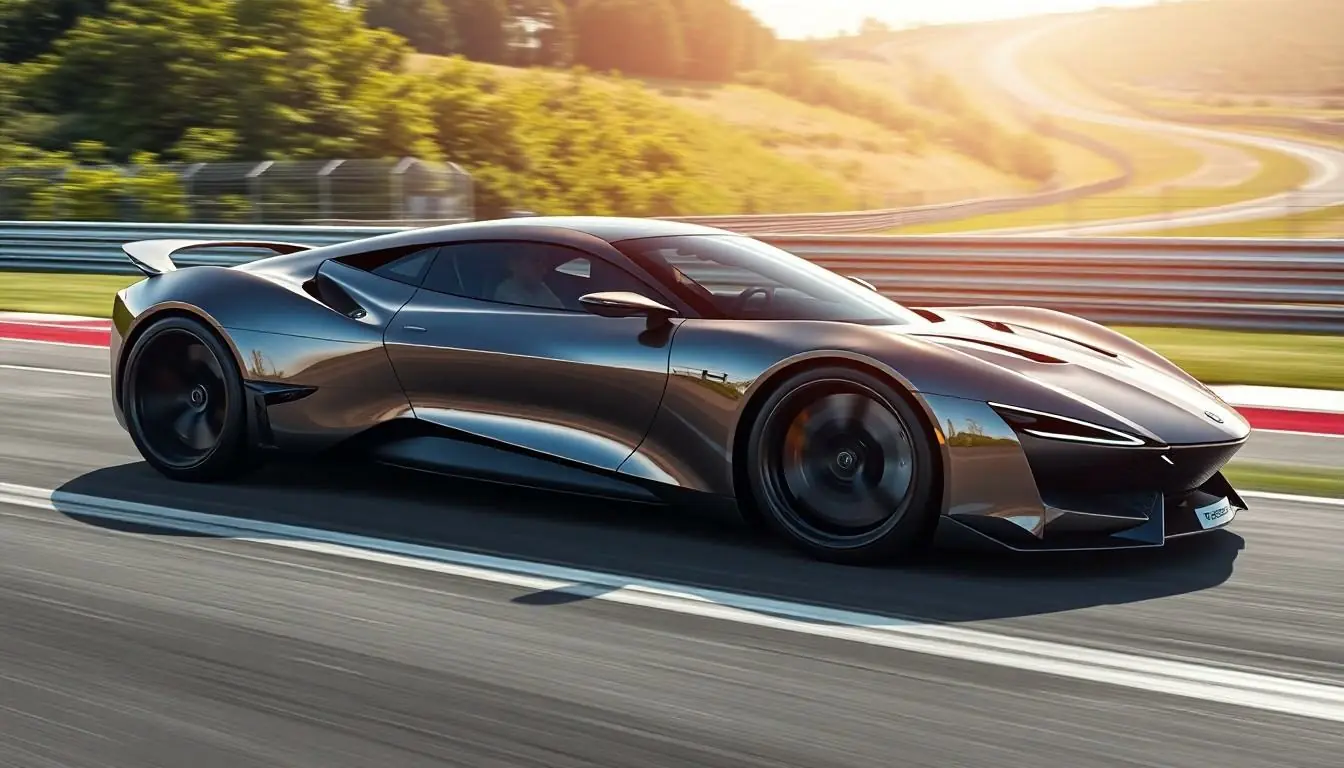The world of electric vehicles is buzzing faster than a squirrel on a caffeine high. With technology advancing at lightning speed, the race to create the fastest electric cars has never been more thrilling. Gone are the days when “fast” meant a gas-guzzling monster; now, it’s all about sleek designs and jaw-dropping acceleration that’ll leave you questioning if you accidentally stepped into a sci-fi movie.
Table of Contents
ToggleOverview of Fastest Electric Vehicles
Fastest electric vehicles represent the cutting edge of automotive engineering. These cars redefine speed, combining innovation with eco-friendly technology. Models like the Rimac Nevera achieve astounding performance, hitting 0 to 60 mph in just 1.85 seconds. Tesla’s Model S Plaid follows closely, boasting a 0 to 60 mph time of 1.99 seconds.
Noteworthy contenders emerge from various manufacturers. The Lucid Air Dream Edition showcases a top speed of 168 mph and an impressive range of 503 miles. Porsche’s Taycan Turbo S holds its ground with a 0 to 60 mph capability of 2.4 seconds, merging luxury and performance.
Specifications among these vehicles provide insight into their engineering. Rimac Nevera features four electric motors producing 1,914 horsepower. Tesla Model S Plaid takes pride in its tri-motor setup that generates 1,020 horsepower. Lucid Air boasts 1,111 horsepower, demonstrating the significant power available in electric formats.
Competition among brands fuels advancement in battery technology and aerodynamics. Engineers focus on lightweight materials and efficient designs to enhance speed and range. As a result, performance metrics continue to improve yearly, showcasing a shift in industry standards.
Electric vehicles now challenge traditional gasoline models in speed. Manufacturers invest heavily in research, pushing boundaries for both performance and sustainability. The landscape of transportation transforms rapidly, creating excitement for future innovations.
Top Fastest Electric Vehicles in 2023

Electric vehicles continue to push the limits of speed and performance. The latest models showcase groundbreaking technology, combining rapid acceleration with superior range.
Vehicle 1: Specifications and Features
The Rimac Nevera stands out with an astonishing 0 to 60 mph time of just 1.85 seconds. Four electric motors generate an impressive 1,914 horsepower, delivering blistering performance on the road. Equipped with a top speed of 258 mph, this vehicle also features a range of 340 miles on a single charge. Advanced aerodynamics enhance stability, while its lightweight carbon fiber construction ensures optimal efficiency.
Vehicle 2: Specifications and Features
Tesla’s Model S Plaid impresses with its acceleration of 0 to 60 mph in 1.99 seconds. This model utilizes a tri-motor setup, achieving a power output of 1,020 horsepower. A top speed of 200 mph complements its 396-mile range, making it practical for daily use. The large touchscreen interface provides intuitive controls, while constant over-the-air updates keep software current.
Vehicle 3: Specifications and Features
Lucid Air Dream Edition delivers remarkable performance with a 0 to 60 mph time of 2.5 seconds. Its 1,111 horsepower ensures exhilarating acceleration, supported by advanced dual-motor technology. A competitive top speed of 168 mph pairs well with an impressive range of 503 miles, allowing for long-distance travel without frequent charging. Luxurious features and cutting-edge technology enhance the driving experience, signaling the brand’s commitment to quality.
Comparison of Speed and Performance
Electric vehicles are reshaping notions of speed, emphasizing innovative technology and design. Comparing electric vehicle performance showcases impressive acceleration and top speeds that challenge traditional gas-powered cars.
Acceleration Times
Rimac Nevera leads in acceleration, achieving 0 to 60 mph in just 1.85 seconds. Tesla’s Model S Plaid closely follows at 1.99 seconds, highlighting its tri-motor system’s prowess. Lucid Air Dream Edition impresses with a rapid time of 2.5 seconds. Performance of Porsche’s Taycan Turbo S stands at 2.4 seconds, showcasing its engineering capabilities. Acceleration serves as a key indicator of each vehicle’s performance metrics, demonstrating advancements in electric powertrains.
Top Speed Rankings
In terms of top speed, Rimac Nevera dominates with an astonishing 258 mph. Tesla’s Model S Plaid achieves a top speed of 200 mph, positioning it as a formidable competitor. Lucid Air Dream Edition boasts a top speed of 168 mph, balancing performance and luxury. Porsche’s Taycan Turbo S rounds off the rankings with a top speed of 162 mph. These speeds illustrate the growing competitiveness among electric vehicles, reflecting innovation surrounding aerodynamics and design.
Factors Influencing Electric Vehicle Speed
Multiple factors contribute to electric vehicle speed, including battery technology and vehicle weight. Understanding these elements reveals insights into how manufacturers achieve remarkable performance.
Battery Technology
Battery technology stands at the forefront of electric vehicle speed enhancements. High-capacity lithium-ion batteries power vehicles, facilitating quick energy delivery to motors. Fast charging capability significantly boosts performance, allowing for rapid acceleration. Innovative designs, like solid-state batteries, promise improvements in energy density and reduce weight. As manufacturers invest in advancements, models featuring larger kilowatt-hour capacities often achieve greater driving ranges without compromising speed. For example, the Rimac Nevera employs cutting-edge battery tech, supporting its exceptional acceleration rates.
Weight and Aerodynamics
Weight and aerodynamics play crucial roles in determining electric vehicle speed. Lighter vehicles experience less inertia, enabling faster acceleration. Manufacturers utilize lightweight materials, such as carbon fiber and aluminum, to enhance performance without sacrificing structural integrity. Aerodynamic design reduces drag, allowing vehicles to slice through air efficiently, which increases top speed and overall handling. Features like active aerodynamics adjust during driving, optimizing performance under various conditions. The slim profiles of models like the Porsche Taycan Turbo S illustrate the impact of sleek designs on speed capabilities.
The race for the fastest electric vehicles is redefining the automotive landscape. With remarkable advancements in technology and engineering, these electric powerhouses are not just about speed but also about efficiency and sustainability.
As manufacturers push the boundaries of performance, the competition fosters innovation in battery technology and vehicle design. This evolution ensures that electric vehicles are not only thrilling to drive but also practical for everyday use.
The future of transportation is bright as these electric marvels continue to challenge the status quo, promising a new era where speed and sustainability go hand in hand. Enthusiasts and consumers alike can look forward to even more exhilarating developments in the years to come.



